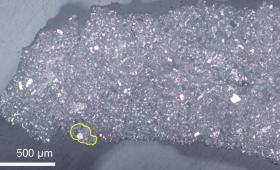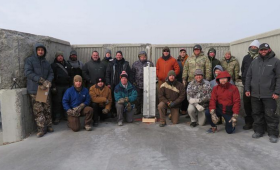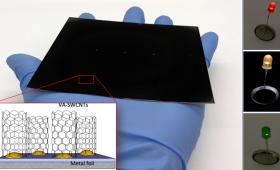The American Chemical Society recently elected LLNL’s Annie Kersting to serve as vice chair of the Division of Nuclear Chemistry and Technology for a three-year term.
Science and Technology
in the News
Science and Technology
in the News
News Center

In collaboration with an international team, LLNL scientists looked at the isotopic composition of oxygen, carbon and manganese-chromium in two asteroid particles to help determine the source of the water and timing of the chemical reactions



Skywing, a new software developed at LLNL, provides scientists working to protect the nation’s critical infrastructure with a high-reliability, real-time software platform for collaborative autonomy applications.





Researchers have created vertically aligned single-walled carbon nanotubes that could be a boon for energy storage and the electronics industry.


